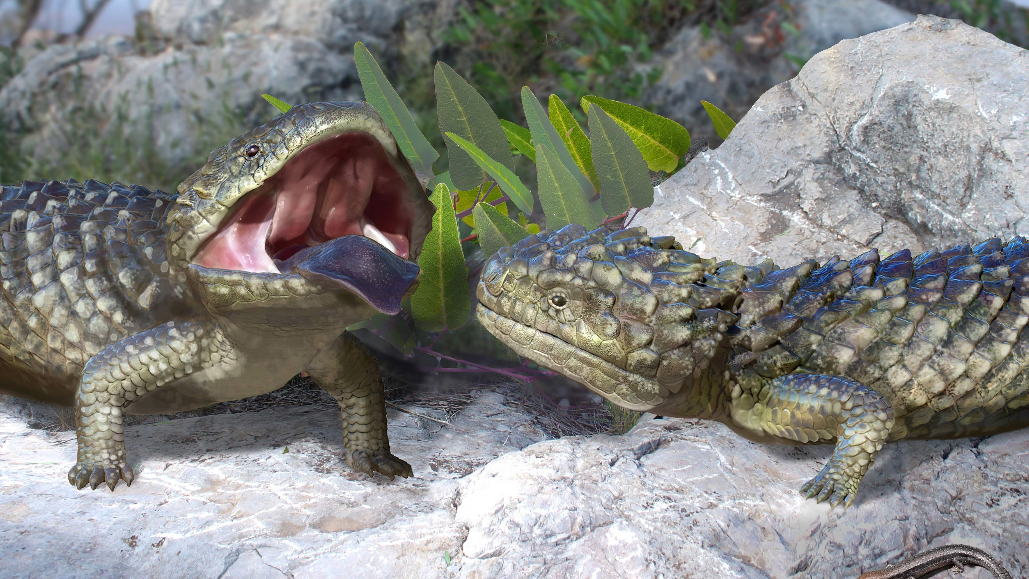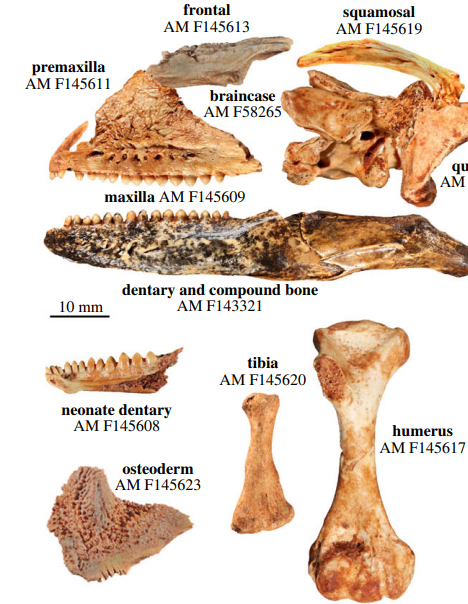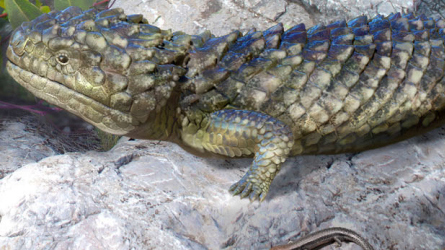A new 'supersized' lizard with a body covered in spiked armour that lived in Australia during the Ice Age has been identified by researchers.
The fossil lizard, discovered by researchers at Flinders University, has been described as the "largest and most bizarre skink" that ever lived.
While related to shinglebacks found in Australia today, Tiliqua frangens, Frangens for short was as big as an arm and covered in thick armour.
READ MORE: Missing Australian found dead in Canada bear country

The lizard lived during the Pleistocene, which was around 2.58 million to 11,700 years ago.
It lived alongside megafauna such as marsupial lions, bear-like marsupials diprotodons and short-faced kangaroos, researchers said.
"Frangens was 1000 times bigger than the common Australian garden skinks and has a unique chunky, spiked profile," said lead author Dr Kailah Thorn, from the Western Australian Museum who studied the fossils as part of her PhD at Flinders University.
"It reveals that even small creatures were supersized during the Pleistocene."
The creature was pieced together from bones unearthed from excavations at Wellington Caves in NSW and from fossils held in museums around Australia.
READ MORE: Delays at Melbourne Airport after security breach

"In the dig at Wellington Caves, we started finding these spiked armoured plates that had surprisingly never been recorded before. We knew we had something interesting and unique," said co-author Dr Diana Fusco, from the Flinders University Palaeontology Laboratory.
Frangens is believed to be related to the living shingle back, or sleepy lizard, but is even larger and more heavily armoured, according to the new study published in Proceedings of the Royal Society of London B: Biological Sciences.
The name Frangens means to break into pieces or smash, describing how strong the jaw was.
Skinks are lizards characterised by shiny, overlapping scales, and no pronounced neck.
Sleepy Lizards and blue-tongued lizards are relatively large living skinks.
There are 1740 species of skinks currently recognised.
READ MORE: Road reopens after horror Hunter Valley bus crash

The extinction of Frangens coincides with the disappearance of the megafauna and suggests these end-Pleistocene extinctions were more extensive, affecting smaller creatures as well, the researchers say.
"Deciphering how Pleistocene animals adapted, migrated, or what eventually caused their extinctions might help us conserve today's fauna, which faces pressures such as changing climate and habitat destruction," Thorn said.
